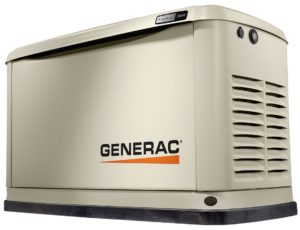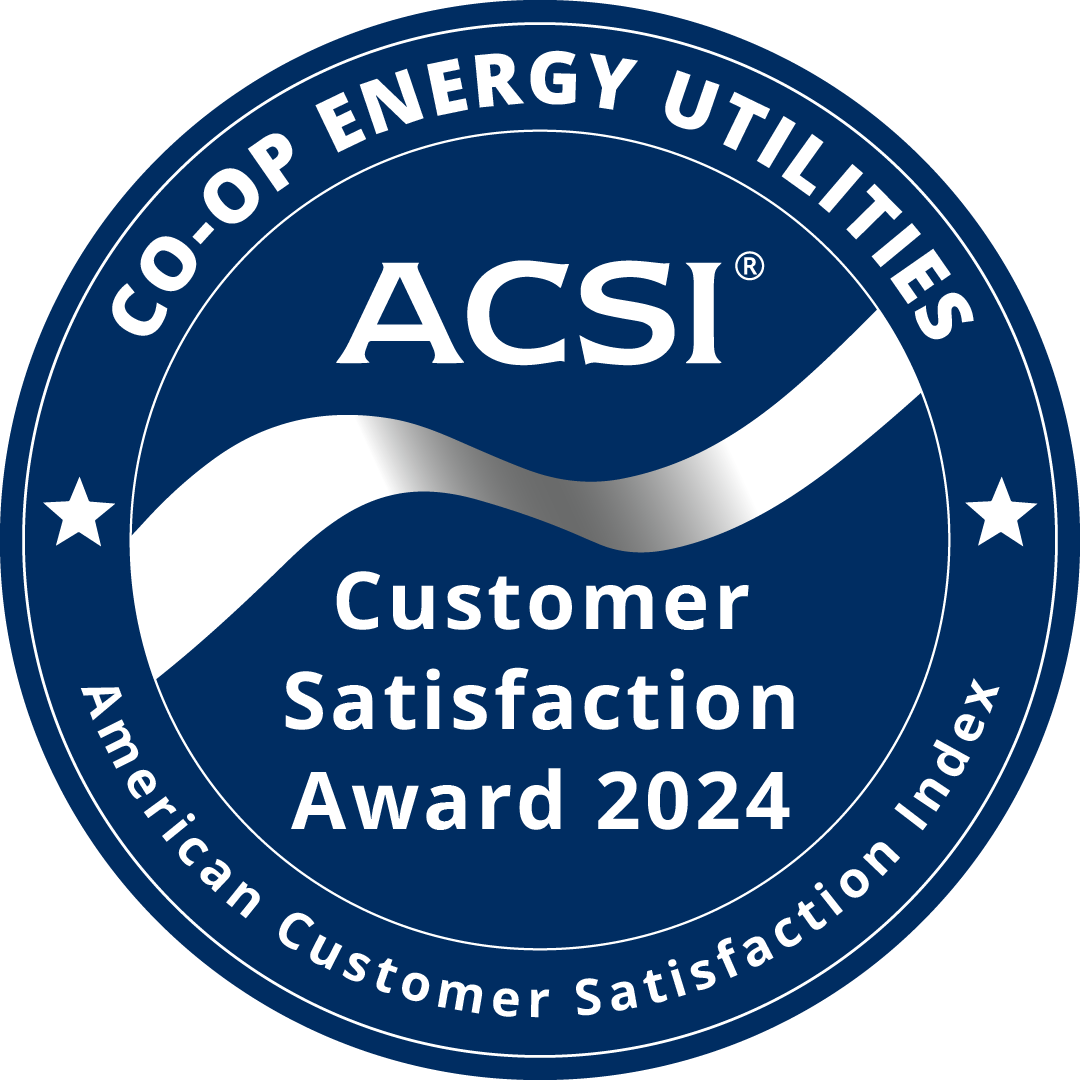Facts You Should Know About Portable Electric Generators
A portable electric generator can be a valuable tool, and can be extremely dangerous if not used correctly. If you are thinking about buying a portable generator for back-up electricity, here are some facts you should know before you buy.

Portable electric generators can be a good way to keep computers, lights, refrigerators and other appliances running if a power outage occurs. And if someone in your home depends on medical equipment, a portable generator can provide much needed power in an emergency.
Connecting a generator to another power source could damage your appliances and seriously injure or kill you or a WREC worker who may be working on nearby power lines. If you run a generator during a outage, it cannot be connected to another power source, such as WREC’s power lines. Under the law, you are responsible for making sure your generator’s electricity cannot feed back into WREC’s power lines.
- Read all manufacturer instructions. Make sure you understand them and are able to follow them before using the generator.
- Carefully follow all instruction on properly “grounding” the generator.
- The total electric load on your generator should never exceed the manufacturer’s rating.
- Good ventilation is important. Generators produce carbon monoxide, a colorless, odorless, poisonous gas that can result in serious injuries, and sometimes even death, if levels become too high. For this reason, your generator should never be operated in your home, garage or other enclosed building. It should always be located outside in a dry location away from your home or other uninhabited area.
- Handle fuel carefully. Turn the generator off to refuel, because gasoline and its vapors can catch fire if they come in contact with an electrical spark. Store fuel in a properly designed container in a safe location, away from children.
- Use only UL-listed, three-prong extension cords, and do not exceed the amp rating of the cord.
- Keep cords out of the way so you don’t trip over them, especially in dimly lit areas.
- Never run cords under rugs or carpets where you may not notice damage that could result in fire.
If you plan to permanently connect your generator to your home wiring, you are required to obtain a permit and inspection from the city or county where you live, and notify WREC by calling 352-567-5133.
Portable generators come in many sizes. Following these steps will help you select the right size for your needs.
- Determine the “constant wattage.” A portable generator operates a limited number of appliances and lights. Choose the items you want to run with the generator and add up the wattage they use. The total is your “constant wattage,” or the energy you will need on a constant basis to keep items running. For help determining wattage information, see the “Calculating Energy Usage” section below.
- Determine the “start-up wattage.” Knowing the “constant wattage” of your appliances is not good enough. Appliances with motors, such as refrigerators, freezers, and air conditioners can require two to three times their normal wattage when the motor starts up. The generator you pick must have a surge rating that meets or exceeds your added “start-up wattage” needs. To determine your “start-up wattage,” identify the appliances with motors that you will run with your generator. Double the “constant wattage” of these items, then add up the totals.
- Match voltage rating. Most appliances are rated at 120 volts, but some larger electric appliances, such as ovens, clothes dryers, and well pumps, are rated at 240 volts. Portable generators may be rated at 120 volts only, or a combination of 120 and 240 volts. Make sure the generator you choose matches the voltage ratings of the items you want to run.
To purchase the right generator, you’ll need to know the wattage of the appliances you plan to run. First, check the owner’s manual and serial plate on your appliance for the wattage (or watts) rating. If the wattage is not listed, find the amperage (amps) and voltage (volts) rating on the name plate. Multiply the amps by the volts to get the wattage.
At Withlacoochee River Electric Cooperative, public and employee safety is our top priority. That is why playing it safe around power lines is everyone’s responsibility. Here are some safety tips to follow:
- Be aware of your surroundings, look for power lines and assess your environment for potential problems.
- Power lines should be considered energized and dangerous.
- Stay away from downed power lines, and report them to the Cooperative immediately by calling 352-567-5133, or by calling 911.
- Do not place antennas, swings, sheds, trees, boats, etc. near power lines.
- Do not trim trees next to power lines.
- Call 48 hours before you dig to have underground facilities located.
- Never climb trees around power lines.
- Make sure you keep a safe distance from power lines when flying a kite or model airplane.
- Do not enter or play near substations and underground transformers.
Puget Sound Energy has created a very informative video on downed power line safety. You can watch it at : Downed power line safety video.
- If plugs seem to fit loosely into a wall outlet, the wall outlet needs repair. A loose fitting wall outlet may cause overheating. Have an electrician check the outlet.
- Use only extension cords that have been listed by a recognized certification organization.
- Make sure cords are in good condition – not frayed or cracked. Make sure they are placed out of traffic areas. Cords should never be nailed or stapled to the wall, baseboard or to another object and they should not have any furniture resting on them.
- Check to see that extension cords are not overheated. Additionally, extension cords should only be used on a temporary basis; they are not safe as permanent household wiring.
- Make sure the proper-type plug is in each outlet. If you are using three-prong plugs in a room with two-conductor outlets, do not cut off the ground pin (the third/bottom prong) from the plug; this could lead to an electrical shock hazard. A better solution is to use a two-prong adapter. NEVER FORCE A PLUG INTO AN OUTLET IF IT DOESN’T FIT. This could lead to fire or shock. Plugs should fit securely into outlets, and outlets should not be overloaded.
- Ground fault circuit interrupters (GFCIs) can prevent many electrocutions. GFCIs are devices installed in kitchen and bathroom outlets. They should be used in any area where water and electricity may come into contact. Test GFCIs regularly according to the manufacturer’s instructions to make sure they are working properly. Need to install a GFCI? Contact a licensed electrician for professional installation.
- Check the wattage of all light bulbs in lighting fixtures to make sure they are the correct wattage for the size of the fixture. Replace bulbs that have higher wattage than recommended; if you don’t know the correct wattage, check with the manufacturer of the fixture. Make sure bulbs are screwed in securely; loose bulbs may overheat.
- Circuit breakers and fuses should be the correct sizes for the circuits. If you do not know the correct size fuse, have an electrician identify and label the sizes to be used. Never replace a fuse with anything but another correct size fuse.
- If one appliance repeatedly blows a fuse or trips a circuit breaker, or if it has emitted an electric shock, unplug it and have it repaired or replaced.
- Water and electricity don’t mix. Don’t place any electrical appliances near water, i.e., a sink or a bathtub. Appliances that are used near water should be unplugged when not in use. If you have an appliance that has gotten wet, unplug it and don’t use it until it’s been checked by a qualified repair person.
- Check to see that all entertainment/computer equipment is in good condition and working properly; look for cracks or damage in wiring, plugs and connectors.
- Never remove the third prong of a three-pronged plug. It can protect you from electrical shock. Instead, convert two-pronged outlets to fit three-pronged plugs using an adapter with a ground tab.
- Turn off electrical products if a cord overheats.
- Use only weather-resistant heavy gauge extension cords marked “For Outdoor Use.”
- Be sure amperage ratings for outdoor extension cords are higher than those electrical products they are used with. Check owners manuals and electrical labels.
- Outdoor electrical products should be:
- Plugged in and turned on only when in use
- Never left unattended outdoors
- Turned off when being carried or being hooked up to attachments like mower baskets or saw blades
- Never remove safety guards from lawnmowers, power tools, etc.
- Unless you are a qualified electrician, never try to repair electrical products yourself.
- Use safety goggles when operating lawn equipment and wear special safety gear suggested in power tool manuals.
- Clean up the area before mowing the lawn or using electrical clippers or trimmers.
- Keep cords out of your path or work area. Throwing the cord over your shoulder may help.
- Keep outdoor outlets and electrical products covered and dry between uses.
- Select a dry day to power up outdoors.
- If an electrical tool falls into a pool or pond, unplug it first. Do not reach into the water for it.
- Put a Ground Fault Circuit Interrupter (GFCI) between your electric power source and your electric tool. In a mishap, a GFCI can cut off power in less than a second. A GFCI is an electrical device that can protect you from electrical shock and may prevent fires. They should be installed in kitchen, bathroom, and outdoor receptacles. You may have a GFCI built into your outdoor outlets. Or they may be in your mower, trimmer or drill. (Check your owner’s manual.)
- No GFCI? Contact a licensed electrician for professional installation.
Portable Generator Safety Video


